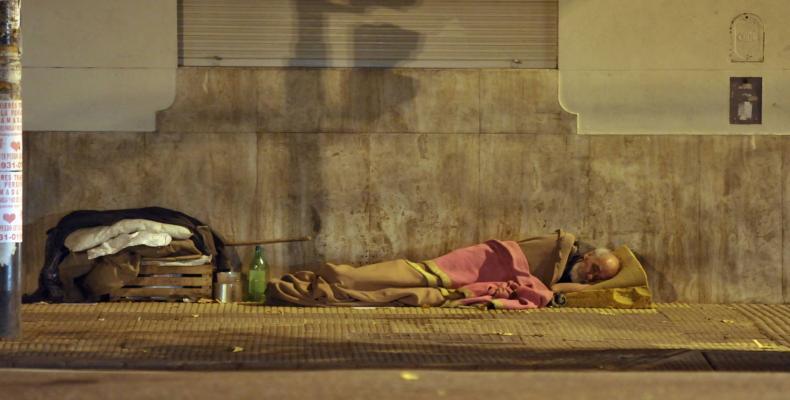Buenos Aires, July 8 (RHC)-- The number of people living in the streets of Argentina's capital, Buenos Aires, has increased by 23 percent over the past two years -- reaching more than 7,000 that face homelessness, according to a preliminary report for a second census of the homeless.
The report’s figures sharply contrast with those issued by a governmental official, Diego Santilli, who said that the increase was of five percent, in comparison with the 2017 census. Authorities in Buenos Aires keep on repeating that there are only 1,141 the people living in the streets.
However, a second census done by social organizations revealed that 7,251 people are living outside. As winter sets in the capital city, since June 21st, the cold wave has caused the deaths of five people who had to sleep on the street, facing temperatures of two degrees Celsius (35 Fahrenheit).
"The survey shows that homeless people have not been a priority for the government, which turns this situation into a structural problem that requires structural, not just superficial policies," said the city's general ombudsman, Horacio Corti, for whom the answers given by the government are insufficient.
Corti also criticized the methodology of the official census, as "the government did not carry out the survey correctly, therefore it does not have the necessary information and knowledge to suggest adequate public policies. Another indicator that these people are not a priority for them."
The organizations that conducted the census in April showed that more than 70 percent of the respondents sleep in plazas, on buildings' doorsteps or on the city’s sidewalks. Nine percent sleep in inns and 18 percent in other types of establishments. Of this population 16 percent are children and 84 percent adults.
They also reported that the homeless population is characterized by its “fluctuation.” Homeless people do not remain in a unique or specific place, they often hide or wander in search of means of survival or because of the persecution to which they are subjected.
For this reason, the population is difficult to access, thus a specific approach was developed to do the census.
It was organized over four days, two working days and a weekend, and among the census takers were also homeless people that allowed overcoming the resistance of many to respond.
Census takers also highlighted the number of people who answered that it was their first time on the streets has doubled compared to the first census. In 2017, 23 percent of the respondents said it was their first time being homeless, but in 2019 they were 52 percent.
When asked for the reason why they have lost their homes, people gave different answers, including loss of work, eviction from housing, separation from partners and the inability to pay rent.


